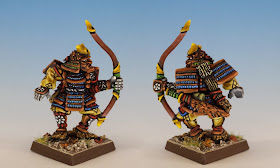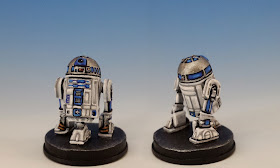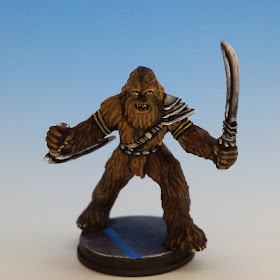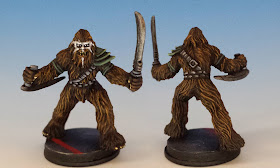What is your yearly miniature painting output? I hope you'll let me know in the comments. For the first time, I've kept track of my own production... in 2015, I painted 161 miniatures:
25 miniatures for 1st/2nd Edition Talisman
18 Orc ships for Man O'War
3 Black Orcs sculpted by Bob Olley
2 Citadel Townsfolk
18 Citadel Gothic Horror Miniatures
22 Citadel Lord of the Rings Miniatures (1980's)
73 Star Wars - Imperial Assault Miniatures
Breaking down these numbers, that's about 3 miniatures a week... not bad, I suppose, given how slowly I paint. I can only guess what the average number of hours I spend on each miniature... but I reckon it has to be at least 4 hours per figure. In other words, I've spent about 644 hours painting this year. Since there's about 6000 waking hours in each year, that means I've devoted over 10% of 2015 to brushwork. Is this a good use of time? Let's ask 17th century mathematician and philosopher Blaise Pascal.
 |
| Pascal: "God wants you to paint miniatures." |
Pascal is famous for writing that all humans wager with their lives that either God exists or he does not exist. Based on the assumption that there is at least a small probability that God exists, Pascal argued that a rational person should live as though God exists. That's because if God does not exist, such a person suffers only marginal losses (such as genuflection related injuries). But on the other hand, a pious person sets himself up for infinite gains if God does indeed exist. Sounds reasonable! And it seems to me that if God exists, there is also a very small chance that He wants us all to devote at least 10% of our lives to painting vintage miniatures (and will punish us with hellfire if we slack off). The logic is iron-clad. And therefore, my life is on the right track.
The accomplishment that gives me the most satisfaction is finishing the complete set of Talisman miniatures. Sometimes, when other aspects of my life depress me, I try to cheer myself up with the thought "yes things may be terrible, but at least I have painted a complete set of vintage Talisman miniatures." Oddly, this mantra works.
 |
| Talisman Samurai |
The most challenging paint-jobs in 2015 have been the Star Wars Imperial Assault. Trying to accurately represent the characters I love so well has been nerve-wracking. The one that took the most effort was R2-D2 -- the geometric patterns of his trunk seem so simple but the details seem to carry so much of his personality.
 |
| R2-D2 for Star Wars - Imperial Assault |
This has also been my first full year of blogging. My three favourite posts of 2015 are:
- When did Games Workshop Go to Pot? (Jan. 28, 2015)
- Oldhammer Battle Report: "How I Learned to Stop Worrying and Love the Man-Mangler" (Mar. 4, 2015)
- The Lightsaber's Riddle (Mar. 12, 2015)
But what has truly brought me pleasure is the wonderful community I've discovered online. I can say with complete sincerity that every follower and (especially) every comment left on this site brightened 2015 for me. And to discover so many other great websites and people has been a revelation... So thanks for visiting, and I hope you have a wonderful New Year!





